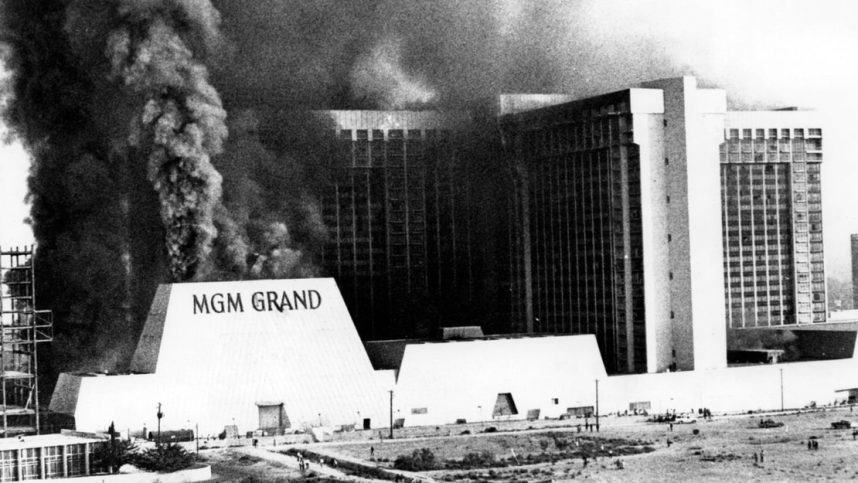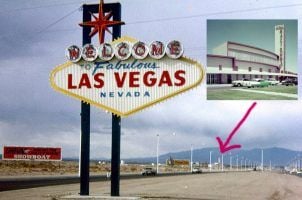VEGAS MYTHS RE-BUSTED: MGM Grand Fire Victims Died Because They Wouldn’t Leave Slots
Posted on: November 22, 2024, 07:17h.
Last updated on: November 20, 2024, 01:42h.
EDITOR’S NOTE: “Vegas Myths Busted” publishes new entries every Monday, with a bonus Flashback Friday edition. Today’s entry in our ongoing series originally ran on March 18, 2024.
This is by far the most repulsive myth we’ve had the displeasure of busting. Enough real lessons were learned from the MGM Grand Hotel fire, which claimed 87 lives on Nov. 21, 1980. Blaming some of these poor souls for their own deaths is beyond abhorrent.

“Gamblers in the casino who had refused to immediately leave their slot machines were killed when a fireball shot through the casino, scorching everything from the ceiling to the floor and out the doors to valet parking,” reads a quiz posted to vegasslotsonline.com.
Responding to a link to the quiz on Reddit, one user commented: “Can’t believe that some people died in the MGM fire because they refused to leave the slot machines! Greed kills.”
In reality, not one victim of this horrific tragedy lost their life because they were on a roll. However, that Reddit user got one thing right…

Greed Kills
Greed was the primary cause of the tragedy.
Kirk Kerkorian and Fred Benninger, the owner and the chairman of MGM while the corporation built the MGM Grand in 1972-73, fought against equipping it with automatic sprinklers. This was despite pressure from Clark County’s fire marshal and a letter from one of their own consultants, Orvin Engineering Company, stating that “the liability of all the unsprinklered areas in this building should be a concern to your corporation.”
The MGM Grand’s total construction bill came to $106M. Yet apparently, an extra $192K was just too much to bear. So Kerkorian and Benninger sought relief from the Clark County Building Department.
Unfortunately, they got it. Building Department director John Pisciotta rendered the fatal decision that sprinkler codes didn’t apply to the MGM. The reason? Because the casino resort would operate 24/7.
“With sprinklers, it would have been a one- or two-sprinkler fire, and we never would have heard about it,” wrote National Fire Protection Association investigator David Demers in the organization’s 1982 report on the tragedy.
Myth Understanding
This myth stems from a single sentence published in a Washington Post story on Nov. 23, 1980.
The fire left two victims frozen in their tracks by slot machines, dead, according to one witness who toured the building after the fire was extinguished,” wrote reporter Kathy Sawyer.
Sawyer’s story didn’t state that the victims were seated at slot machines, only that they were “frozen in their tracks” near them. But that account was wrong anyway, according to the Clark County Fire Department’s official report. Of the 17 bodies found inside the first floor, it stated, not a single one was found in the casino area.

“Nobody died at a gaming table or slot machine,” said Clark County Fire Capt. Jon Sabol, the last active firefighter who battled the infamous inferno, speaking to the Las Vegas Review-Journal in 2015. “They were slow in getting out. But everyone got away from the tables and slot machines before the fireball came through.”
A Legacy Up in Smoke
The MGM Grand reopened eight months after the fire with automatic sprinklers and a fire alarm system throughout the property. They were now legally required, due to yet another hotel fire at the International in February 1981.
As part of a $50 million remodel, a second 26-story tower was added later in 1981. But visitation slumped because of bad publicity from the fire and years of ensuing litigation.
More than 1,350 legal claims resulted from the fire’s deaths and injuries, and the MGM Grand eventually agreed to pay $223 million to settle them. Las Vegas, at the time, didn’t have enough law firms to handle all the litigation.
Soured of operating this gigantic monument to failure and death, the MGM sold the hotel and the MGM Grand Reno to pinball and slot machine maker Bally Manufacturing in April 1986. Last year, the Caesars Entertainment property changed its name from Bally’s to Horseshoe.
Quietly, Kerkorian began acquiring the land to build a new MGM Grand a mile south of the old one. It opened in 1993 and still operates today, despite another persistent myth — that the original MGM Grand was imploded after the fire and the current one stands on the same site.
Look for “Vegas Myths Busted” every Monday on Casino.org. To read previously busted Vegas myths, visit VegasMythsBusted.com. Got a suggestion for a Vegas myth that needs busting? Email corey@casino.org.
Related News Articles
VEGAS MYTHS RE-BUSTED: The Old MGM Grand Was Imploded After the Fire
VEGAS MYTHS RE-BUSTED: You Know Which Floor Your Hotel Room is Really On
Bed Bugs Found in Two More Las Vegas Hotels, Total Now Nine – Report
VEGAS MYTHS BUSTED: Sinatra Got His Teeth Knocked Out by a Casino Exec
Most Popular
FTC: Casino Resort Fees Must Be Included in Upfront Hotel Rates
Genovese Capo Sentenced for Illegal Gambling on Long Island
NBA Referees Expose Sports Betting Abuse Following Steve Kerr Meltdown
UPDATE: Former Resorts World & MGM Grand Prez Loses Gaming License
Most Commented
-
UPDATE: Whiskey Pete’s Casino Near Las Vegas Closes
— December 20, 2024 — 32 Comments -
Caesars Virginia in Danville Now Accepting Hotel Room Reservations
— November 27, 2024 — 9 Comments -
UPDATE: Former Resorts World & MGM Grand Prez Loses Gaming License
— December 19, 2024 — 8 Comments -
FTC: Casino Resort Fees Must Be Included in Upfront Hotel Rates
— December 17, 2024 — 7 Comments
















Last Comments ( 3 )
The fire happened one year before I filed for Assembly, my first win for office. The 1981 Session is a story into itself because, even after the fire, the sponsors could not get enough votes for passage of a strong sprinkler bill. Then....... In the middle of the 1981 session a fire broke out in the International Hotel or Hilton and 5 or 6 people died. Joe Neal and Bill Hernstadt were the leaders and after the second fire a bunch of Senators begged to be allowed to sign onto the bill. They did not let them and the bill passed mighty fast after that. I heard the story a hundred times the next year. Another Tale of Legislative History.
The cause the fatalities was not so much the lack ofb sprinklers as the chummy relation of resort to building officials, permitting the building to pass inspections despite code violations
Nice one, as always!